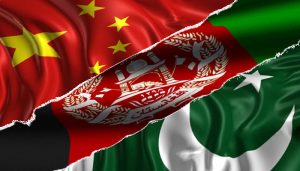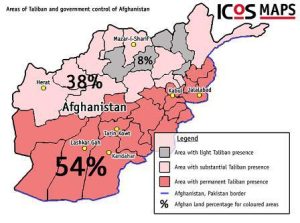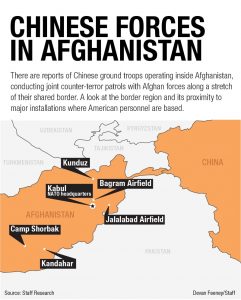
There is nothing strategic about Trump’s Afghanistan policy
by Lawrence Sellin, PHD. September 18, 2017
While accepting billions of American dollars in military and economic aid, Pakistan has been slowly bleeding the U.S. to death in Afghanistan through its support of the Taliban, Haqqani Network and other terrorist groups.
It is Pakistan’s role to force the U.S. and NATO out of Afghanistan to pave the way for regional dominance of its closest ally, China.
China is, quite literally, colonizing Pakistan.
Through its Belt and Road Initiative (BRI), China aims to connect Asia, the Middle East and Africa through land-based and maritime economic zones as part of China’s global ambition to overtake the U.S. as the world’s leading superpower.
One element of that effort is the China-Pakistan Economic Corridor (CPEC), an infrastructure and development project, the backbone of which is a transportation network connecting China to the Pakistani seaports of Gwadar and Karachi located on the Arabian Sea.
Although profitable for China, Pakistan has not fared as well under CPEC:
“After the Free Trade Agreement was signed, Pakistan’s trade deficit with China widened further as exports to China fell to $1.62 billion in 2016-17 from $2.69bn in 2013-14 and imports from China, in contrast showed an alarming increase of 123 per cent, growing from $4.73bn in 2012-13 to $10.53bn in 2016-17.”
Some Pakistani politicians have described CPEC as the Chinese version of the British East India company, which, at its height, had private army of about 260,000 and even the father of capitalism, Adam Smith, found its conquest, subjugation and plunder of the subcontinent distasteful.
According to a recent report, Chinese aspirations in Pakistan are not just about profits, but resemble the colonization of South Asia by the East India Company:
“The plan envisages a deep and broad-based penetration of most sectors of Pakistan’s economy as well as its society by Chinese enterprises and culture. Its scope has no precedent in Pakistan’s history in terms of how far it opens up the domestic economy to participation by foreign enterprises.”
“For instance, thousands of acres of agricultural land will be leased out to Chinese enterprises to set up ‘demonstration projects’ in areas ranging from seed varieties to irrigation technology. A full system of monitoring and surveillance will be built in cities from Peshawar to Karachi, with 24 hour video recordings on roads and busy marketplaces for law and order. A national fibreoptic backbone will be built for the country not only for internet traffic, but also terrestrial distribution of broadcast TV, which will cooperate with Chinese media in the ‘dissemination of Chinese culture’.”
In addition to the already 30,000 Chinese workers in Pakistan, CPEC calls for visa-free entry of Chinese into Pakistan and the establishment of “civil armed forces” to protect Chinese investments and “a coastal enjoyment industry that includes yacht wharfs, cruise homeports, nightlife, city parks, public squares, theaters, golf courses and spas, hot spring hotels and water sports” built for the Chinese under CPEC.
The expansion of the port of Gwadar and its international airport will include a concomitant increase in Chinese residents, estimated to reach 20,000, which may be a prelude to the establishment Chinese regional military facilities. A base in Gwadar at the mouth of the Persian Gulf would complement the Chinese base in Djibouti at entrance of the Red Sea, both strategic choke points.
So, while the U.S. is expending more blood and treasure in Afghanistan and Pakistan continues to regulate our progress there by controlling the battle tempo and the supply of our troops, China is successfully pursuing its geopolitical interests in South Asia, which will eventually include Afghanistan.
By choosing the wrong policy in Afghanistan, there is no end to what the U.S. can’t accomplish strategically.
Here’s a hint – you reach the Taliban through Pakistan and you reach Pakistan through China.
Lawrence Sellin, Ph.D. is a retired colonel with 29 years of service in the US Army Reserve and a veteran of Afghanistan and Iraq.



